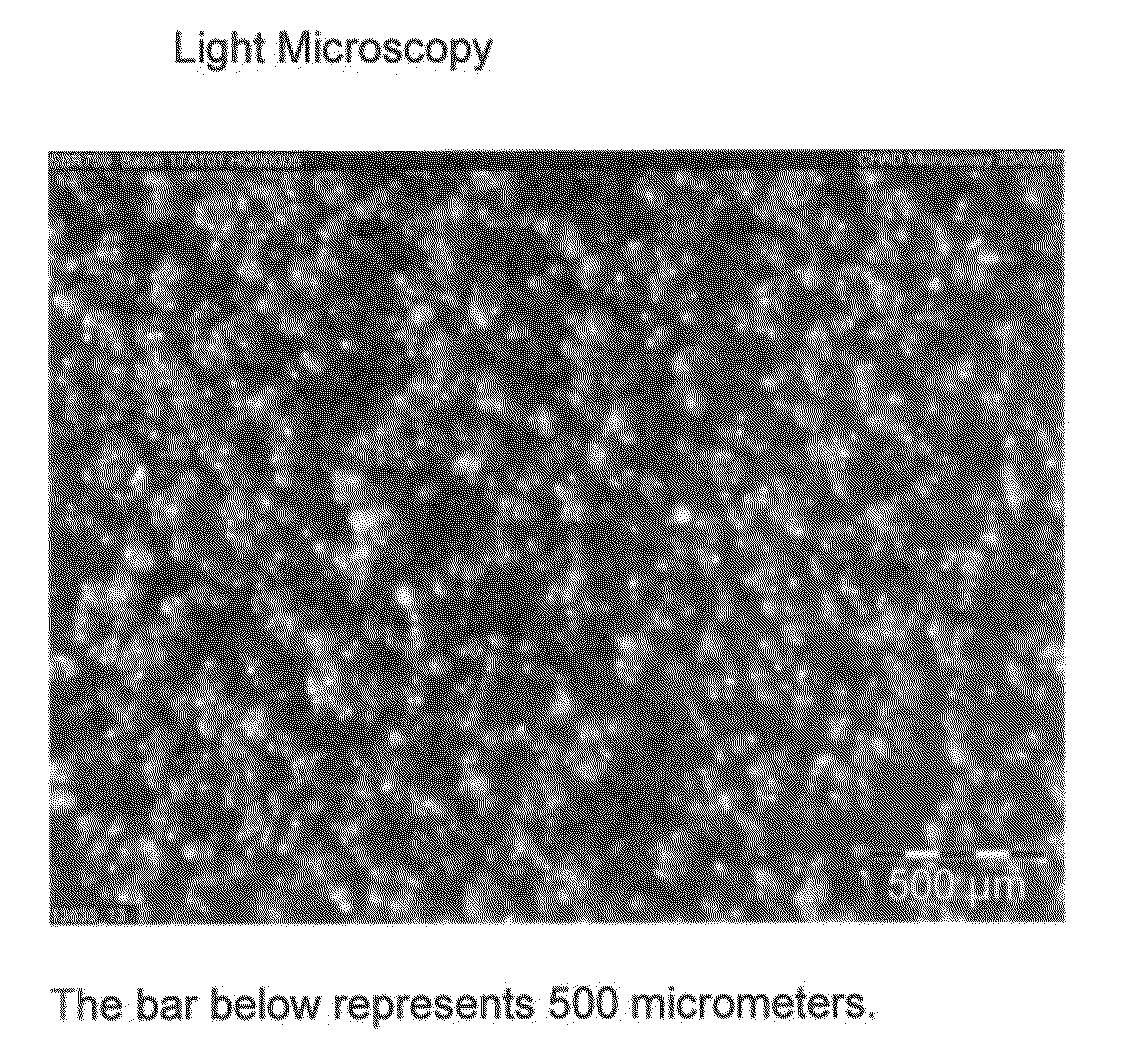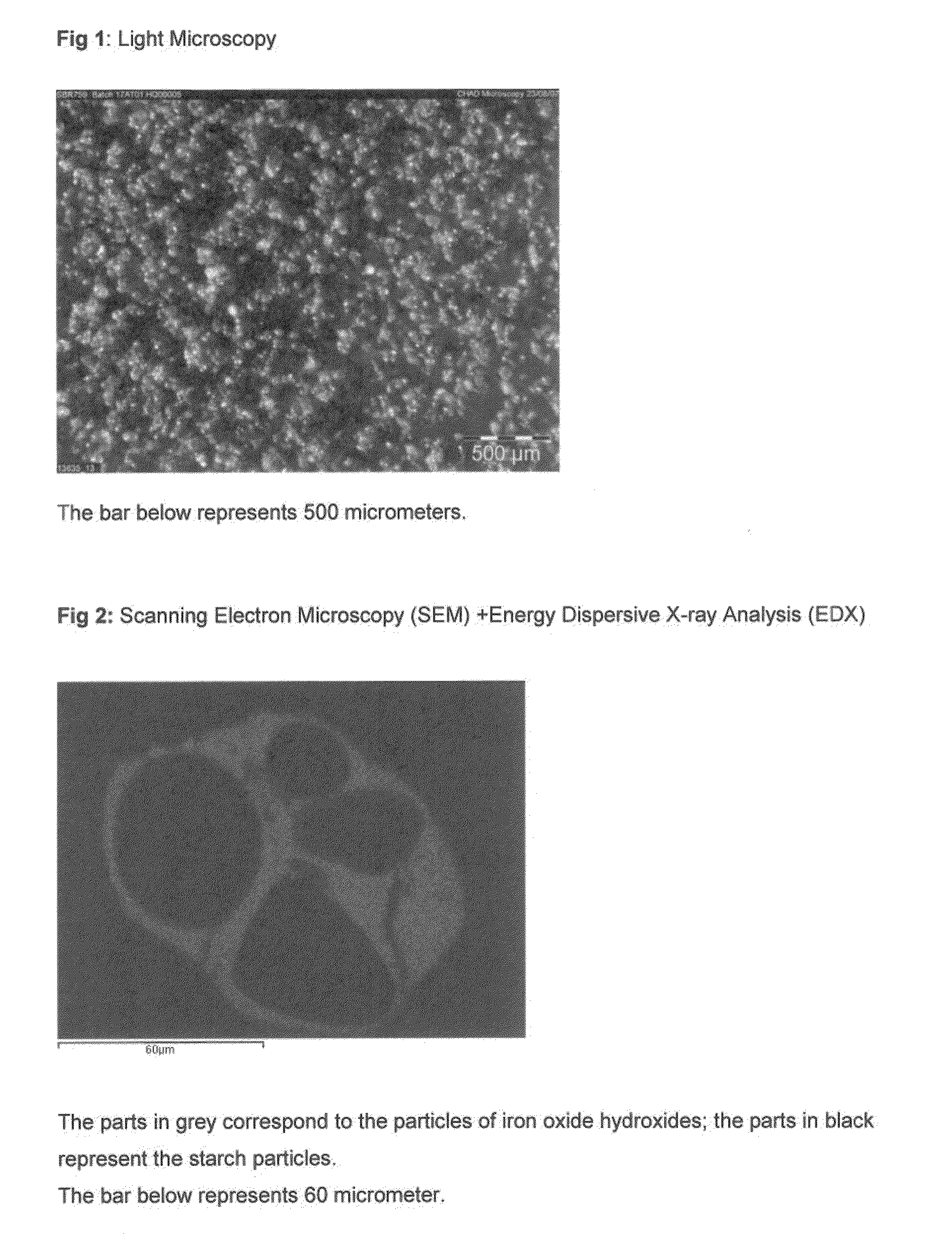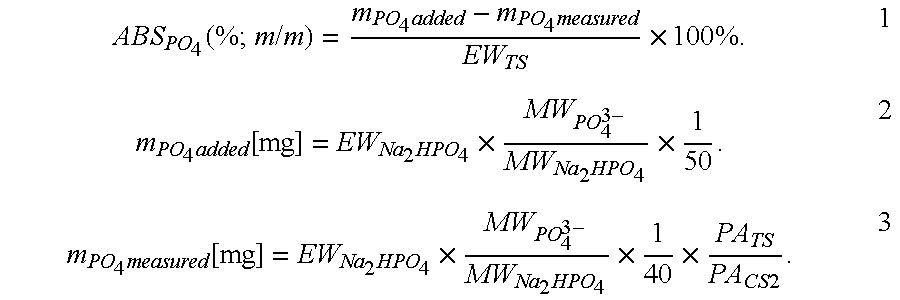Manufacture Process
a technology of manufacture process and process, applied in the field of manufacture process, can solve the problems of increasing morbidity and mortality, reducing vitamin d production, increasing incidence, etc., and achieve the effect of reducing the phosphate binding capacity
- Summary
- Abstract
- Description
- Claims
- Application Information
AI Technical Summary
Benefits of technology
Problems solved by technology
Method used
Image
Examples
example 1
Preparation of Iron(III)-Based Phosphate Adsorbent
[0238]To a mixture of 41 kg potato starch, 118 kg sodium carbonate and 480 kg water a solution of 148 kg iron(III) chloride hexahydrate dissolved in 588 kg water is added over 30 minutes time span at a temperature of 20-35° C. The resulting brown suspension is stirred for at least 60 minutes at 25° C. then filtered and washed three times with 968 kg water each using a decanter centrifuge. Subsequent 160 kg water, 41 kg sucrose and 129 kg ethanol are added and the mixture is stirred for at least 60 minutes. 172 kg of the final product are isolated as a reddish brown powder, obtained by spray drying using a NIRO SD42 with appropriate spray drying parameters or with an atomization pressure of 1.2 bar, an outlet temperature of 65° C. and an Inlet temperature of 140° C.
[0239]The product may be filled without any other processing directly into sachets or stick packs.
example 2
Preparation of Iron(III)-Based Phosphate Adsorbent
[0240]An aqueous solution of 21.1 g sodium carbonate dissolved in 105 g water (solution A) and an aqueous solution of 26.5 g iron(III) chloride hexahydrate dissolved in 55 g water (solution B) are prepared. Solution A (4.2 g / min) and B (2.7 g / min) are dosed to a suspension of 7.36 g potato starch in 40 g water over a time span of 30 minutes by continuous mixing of solution A and B and subsequent addition to the potato starch suspension. The resulting brown-reddish suspension is stirred for at least one hour at 25° C., filtered and washed three times with 173.6 g water each. To the resulting reddish brown solids 14.6 g water, 7.36 g sucrose and 24.2 g ethanol are added and the mixture is stirred for 60 minutes. 18.4 g of the final product are obtained by fluidized spray drying using appropriate FSD conditions.
example 3
Phosphate Binding Capacity of the Material Described in Example 1 or Example 2 Determined by Ion Chromatography / Conductivity Detection
[0241]Separation mechanism used is ion exchange.
[0242]Reagents: Highly pure water (e.g. from Milli-Q-System (Millipore)); Sodium hydroxide (50% (m / m) solution, carbonate free, e.g. Merck 1.58793); 0.1 N Hydrochloric acid (HCl); Hydrochloric acid 37%; Sodium hydrogen phosphate (Na2HPO4).
[0243]Equipment: Ion chromatograph with gradient pump; Anion exchange column (e.g. Dionex IonPac AS11-HC Length 250 mm, internal diameter 4 mm; or equivalent); Self regenerating anion suppressor (e.g. Dionex ASRS-ULTRA II 4 mm, anion suppressor system), PVDF Filter (e.g. Infochroma: 8817E-PV-4 ECO HPLC-Filter PVDF 0.45 μm).
[0244]Chromatographic Conditions
[0245]Gradient elution using degassed water as eluent 1 and 80 mM sodium hydroxide in water as eluent 2.
Gradient programTimeOH− [mM]% E1% E2Remark 01680 20Run start1080 01001480 010014.11680 2016.01680 20Run end18.01680...
PUM
| Property | Measurement | Unit |
|---|---|---|
| temperature | aaaaa | aaaaa |
| time | aaaaa | aaaaa |
| time | aaaaa | aaaaa |
Abstract
Description
Claims
Application Information
 Login to View More
Login to View More - R&D
- Intellectual Property
- Life Sciences
- Materials
- Tech Scout
- Unparalleled Data Quality
- Higher Quality Content
- 60% Fewer Hallucinations
Browse by: Latest US Patents, China's latest patents, Technical Efficacy Thesaurus, Application Domain, Technology Topic, Popular Technical Reports.
© 2025 PatSnap. All rights reserved.Legal|Privacy policy|Modern Slavery Act Transparency Statement|Sitemap|About US| Contact US: help@patsnap.com



